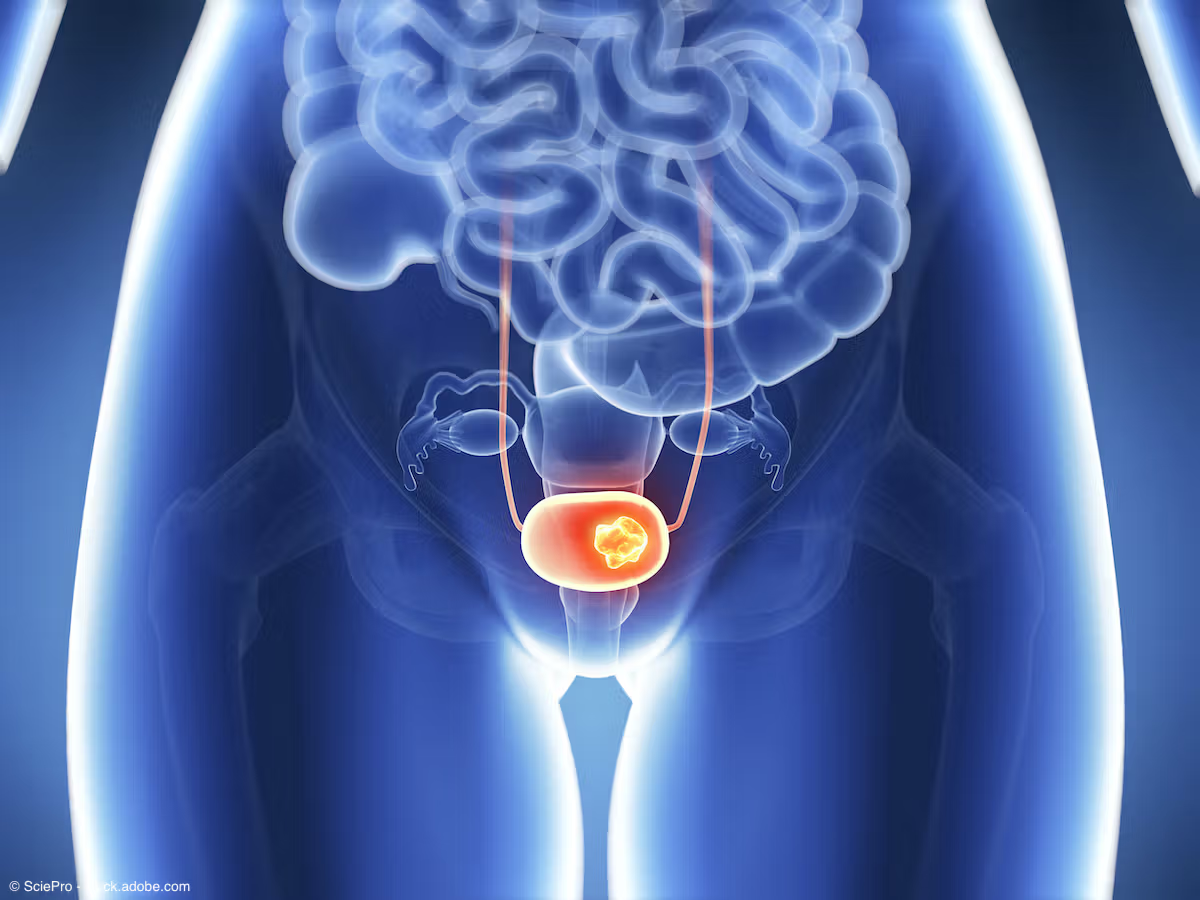News
Article
RETAIN-2 interim data promising for dose-dense MVAC plus nivolumab in MIBC
Author(s):
Key Takeaways
- Dose-dense MVAC plus nivolumab achieved an 84% metastases-free rate in patients with muscle-invasive bladder cancer.
- Patients were stratified into active surveillance or intervention groups based on clinical restaging and genetic mutations.
“Among active surveillance patients, 82% are metastases-free, and 60% were metastases-free and had an intact, unradiated bladder,” said Pooja Ghatalia, MD.
Dose-dense MVAC plus nivolumab (Opdivo) yielded an 84% metastases-free rate in an intent-to-treat (ITT) cohort of patients with muscle-invasive bladder cancer, according to interim data from the RETAIN-2 trial.1
The results were presented at the 2025 American Society of Clinical Oncology Genitourinary Cancers Symposium in San Francisco, California, by Pooja Ghatalia, MD, an associate professor of hematology/oncology at Fox Chase Cancer Center/Temple Health in Philadelphia, Pennsylvania.
Patients were included in the study if they had clinical T2-T3 N0 disease, predominant urothelial carcinoma of the bladder, and ECOG performance status 0 or 1. Study participants received 3 cycles of neoadjuvant dose-dense MVAC plus nivolumab.
Pooja Ghatalia, MD

“While getting neoadjuvant treatment, their pretreatment tissue was sequenced to assess for alterations in previously validated biomarkers signatures that have correlated with chemotherapy response,” Ghatalia said in her presentation.
Following the completion of neoadjuvant treatment, the investigators conducted clinical restaging using cystoscopy biopsies, urine cytology, and CT imaging. Active surveillance was offered to patients who had clinical T0 disease and at least 1 genetic mutation. Intervention (intravesical therapy, chemotherapy/radiation therapy, or cystectomy) was recommended to patients who had residual disease of lacked mutations.
“The primary end point of this trial is 2-year metastasis-free survival [MFS], which has not yet been reached,” Ghatalia said.
Of a total of 80 patients who received patients, 9 were not evaluable. Median age was 69 years (range, 68-86 years). Fifty-five (77%) patients were men, and 16 (23%) patients were women. ECOG performance status was 0 in 57 (80%) patients and 1 in 14 (20%) patients. Histology was pure urothelial carcinoma in 48 (68%) patients and urothelial and carcinoma/variant histology in 23 (32%) patients. Forty-one (58%) patients had cT2 disease, and 30 (42%) patients had cT3 disease. Thirty-one (44%) patients were mutation-positive, and 40 (56.3%) were mutation-negative.
Of the ITT population of 71 patients, 47 were assigned to intervention and 23 were assigned to active surveillance. Crossover occurred with 3 patients assigned to intervention who chose active surveillance, and 4 patients assigned to active surveillance who elected to undergo cystectomy. This resulted in 48 patients undergoing intervention and 22 patients undergoing active surveillance.
Ghatalia reported a 19% incidence of grades 3 and 4 treatment-related adverse events, along with 2 deaths following 3 cycles of dose-dense MVAC/nivolumab, one related to multiorgan failure and the other to acute kidney injury.
“There was 1 death in a patient receiving chemoradiation, likely due to pneumonitis,” Ghatalia reported.
Out of the 45 patients in the intervention group, 35 underwent cystectomy, 3 received BCG, and 10 underwent chemotherapy/radiation therapy. A total of 7 patients developed metastases. The ypT0 rate was 40% in the patients undergoing cystectomy.
For the 19 patients who ultimately accepted active surveillance, 2 patients required delayed cystectomy, and 1 patient required delayed chemotherapy/radiation therapy. Three patients developed metastases. For 3 patients, intervention was recommended but the patients opted for active surveillance. Two of these patients underwent delayed cystectomy, and 1 patient developed metastases.
“Among active surveillance patients, 82% are metastases-free, and 60% were metastases-free and had an intact, unradiated bladder,” Ghatalia said.
Median follow-up was 21.7 months (25th-75th percentile, 13.6-30.3 months). In the ITT population, interim 2-year MFS was 77.4%, and interim 2-year overall survival was 93%.
“In conclusion, at the time of interim analysis, dose-dense and MVAC and nivolumab was associated with a metastases-free rate of 84.2% in [the] ITT [population] and 82% in the active surveillance arm…Compared to RETAIN-1, the ypT0 rate was higher at 40%, and so was the rate of ypT0 plus clinical CR of 54%, suggesting [an] additive benefit of adding nivolumab to dose-dense MVAC,” Ghatalia said.
REFERENCE
1. Ghatalia P, Ross EA, Zibelman MR, et al. A phase 2 trial of risk enabled therapy after neoadjuvant chemo-immunotherapy for muscle-invasive bladder cancer (RETAIN-2). J Clin Oncol. 2025;43(suppl 5). Abstract 815. doi:10.1200/JCO.2025.43.5_suppl.815

















